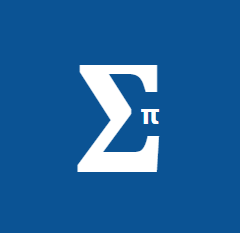Fundamentals of Computer Science with Python and Computer Hardware (CLASS-XI and XII)
This course will develop basic computational thinking. Learn how to reason with variables, state
transitions, conditionals, and iteration. Understand the notion of data types, and higher order data
structures such as lists, tuples, and dictionaries. Appreciate the notion of an algorithm, and understand
its structure, including how algorithms handle corner cases. Develop a basic understanding of computer
systems - architecture, OS, mobile and cloud computing. Learn basic SQL programming. Learn all about cyber
safety.
Here at Sigma-Pi Academy, Video recording of every class and pdf of class notes will be
provided. Regular tests will be taken and we would work on the weakpoint of the student. Doubt clearing at
the time when the student is unable to solve the problem.

Class XI :
-
1. COMPUTER FUNDAMENTALS
a. Software Concepts
b. Data Representation in Computers
c. Microprocessors and Memory Concepts -
2. PROGRAMMING METHODOLOGY
a. Algorithms and Flowcharts
b. Programming Methodology -
3. INTRODUCTION TO PYTHON
a. Getting Started
b. Functions
c. Conditional and Looping Construct
d. Strings
e. Lists
f. Dictionaries
g. Tuples -
4. INTRODUCTION TO SQL
-
5. MOCK TEST AND REVISION OF SYLLABUS
Class XII :
-
1. Prerequisites Computer Science- Class XI (Revision)
-
2. Understand the concept of functions and recursion.
-
3. Learn how to create and use Python libraries.
-
4. Learn file handling.
-
5. Learn about the concept of efficiency in algorithms and computing in general.
-
6. Learn basic data structures: lists, stacks, and queues.
-
7. Get a basic understanding of computer networks: network stack, basic network hardware, basic protocols, and basic tools.
-
8. Connect a Python program with an SQL database, and learn aggregation functions in SQL.
-
9. Have a clear understanding of cyber ethics and cybercrime. Understand the value of technology in societies, gender and disability issues, and the technology behind biometric ids.
-
10. Data visualization using Pyplot :
Line chart, pie chart, and bar chart. -
11. Structure of a network :
Types of networks: local area and wide area (web and internet), new technologies such as cloud and IoT, public vs. private cloud, wired and wireless networks; concept of a client and server.
a. Network devices such as a NIC, switch, hub, router, and access point.
b. Network stack: amplitude and frequency modulation, collision in wireless networks, error checking, and the notion of a MAC address, main idea of routing. IP addresses: (v4 and v6), routing table, router, DNS, and web URLs, TCP: basic idea of retransmission, and rate modulation when there is congestion (analogy to a road network), Protocols: 2G, 3G, 4G, WiFi. What makes a protocol have a higher bandwidth?
c. Basic network tools: traceroute, ping, ipconfig, nslookup, whois, speed-test.
d. Application layer: HTTP (basic idea), working of email, secure communication: encryption and certificates (HTTPS), network applications: remote desktop, remote login, HTTP, FTP, SCP, SSH, POP/IMAP, SMTP, VoIP, NFC 4.3. -
12. Data Management :
a. Write a minimal Django based web application that parses a GET and POST request, and writes the fields to a file - flat file and CSV file.
b. Interface Python with an SQL database.
c. SQL commands: aggregation functions – having, group by, order by. -
13. Society, Law and Ethics :
a. Intellectual property rights, plagiarism, digital rights management, and licensing (Creative Commons, GPL and Apache), open source, open data, privacy.
b. Privacy laws, fraud; cyber-crime- phishing, illegal downloads, child pornography, scams; cyber forensics, IT Act, 2000.
c. Technology and society: understanding of societal issues and cultural changes induced by technology.
d. E-waste management: proper disposal of used electronic gadgets.
e. Identity theft, unique ids, and biometrics.
f. Gender and disability issues while teaching and using computers. -
14. Last 5 years x (3-Set) = 15 papers paper discussion by solving the paper.
-
15. Mock test (5)
-
Extra topics to do project in CBSE :
16. Use the tkinter library.
17. Open a webpage using the urllib library.
18. Compute EMIs for a loan using the numpy or scipy libraries.
